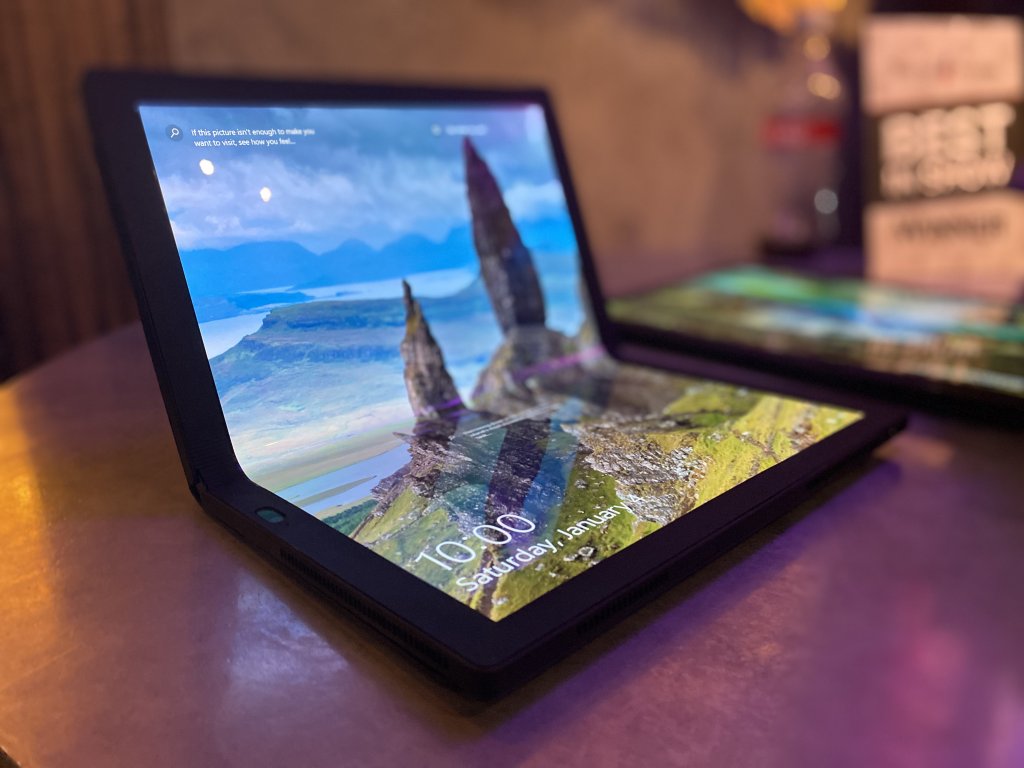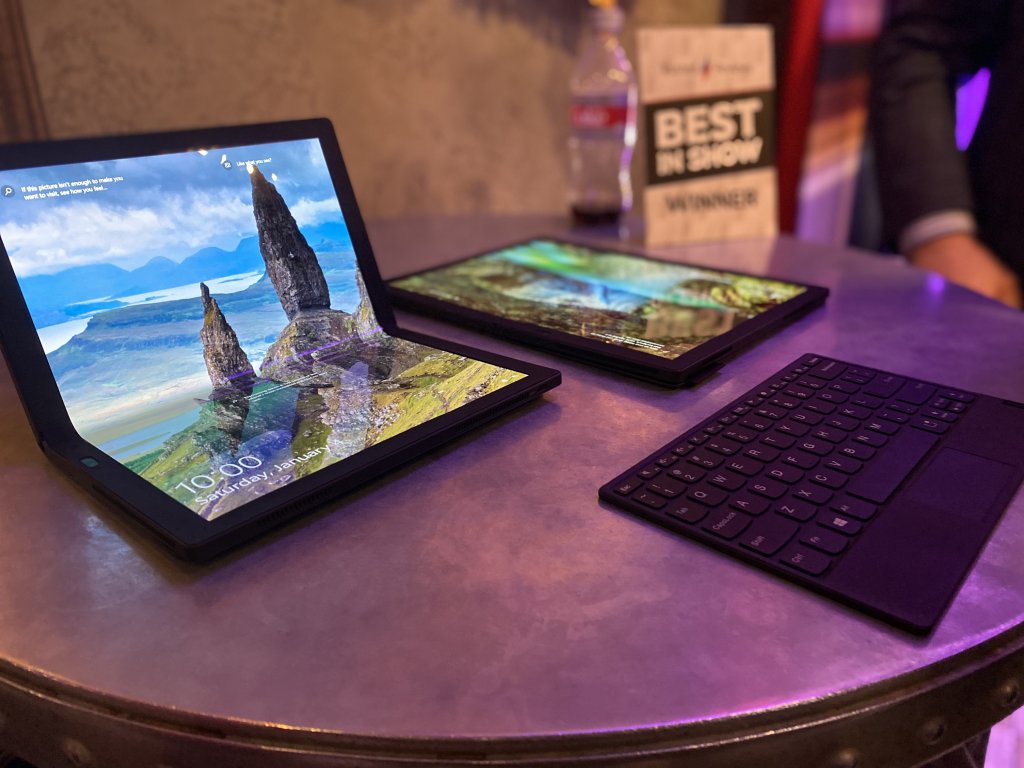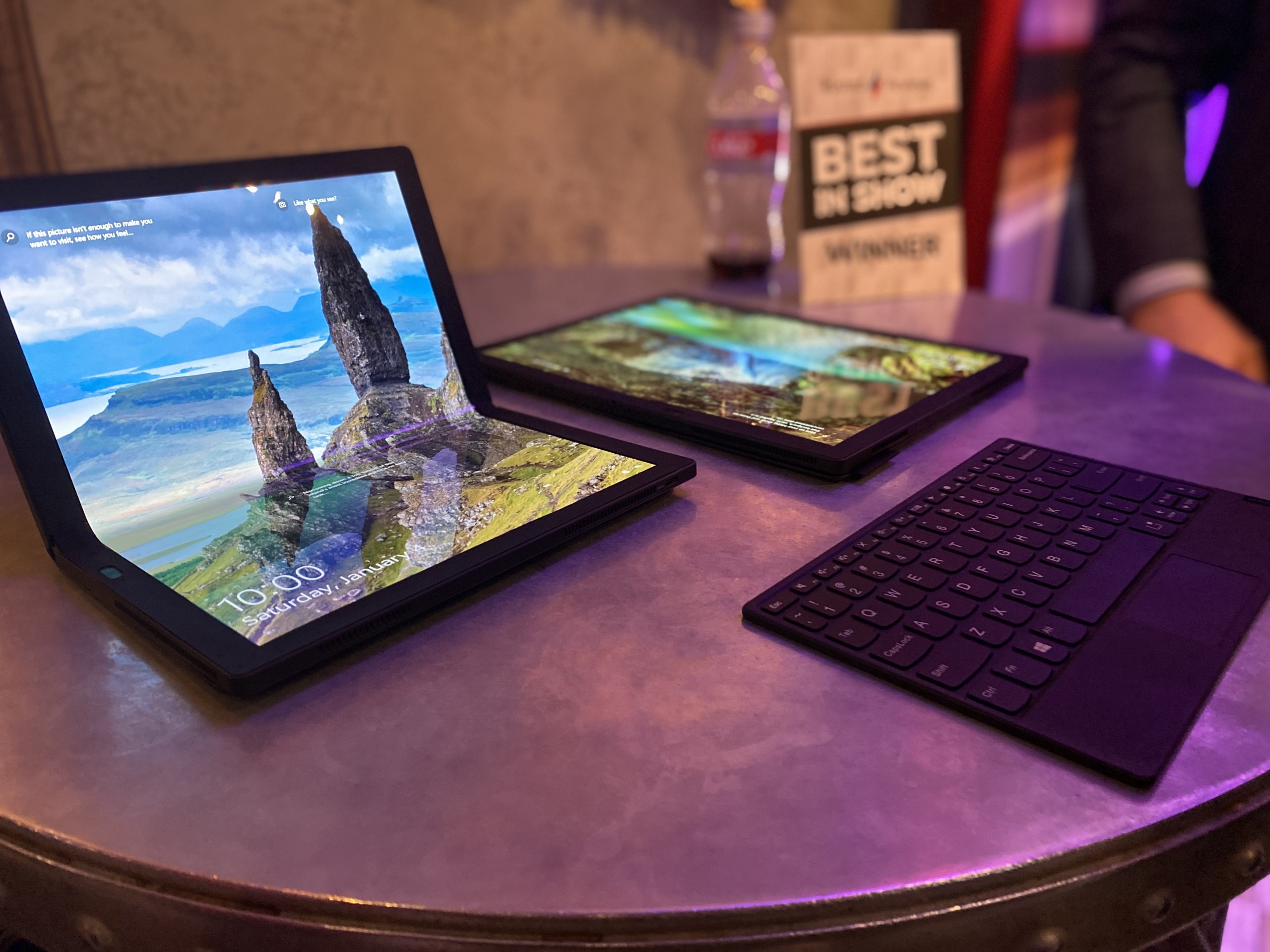
Lenovo, like every other PC and tech manufacturer on the planet (only a little dramatic), had a presence at this year’s CES. And while a lot of tech improved on past iterations of older tech, Lenovo made a couple of very, very big splashes. The most important reveal? A folding Windows PC. More specifically, a laptop with a folding screens—the ThinkPad X1 Fold.
Folding screens have a big presence at CES this year. Unfortunately, though, it’s usually just a gimmick. Having a phone with a folding screen is cool and all, don’t get me wrong. But so far, no manufacturer has been able to show off practical uses of that technology. Lenovo isn’t immune to that, either. The new Razr phone, for instance, is cool, but there isn’t any software or real-world applications of the screen bending to really show what it can do just yet. That’s not a bad thing, real life and software just needs some time to catch up. This new PC, however, is one step ahead.
The ThinkPad X1 is not a gimmick
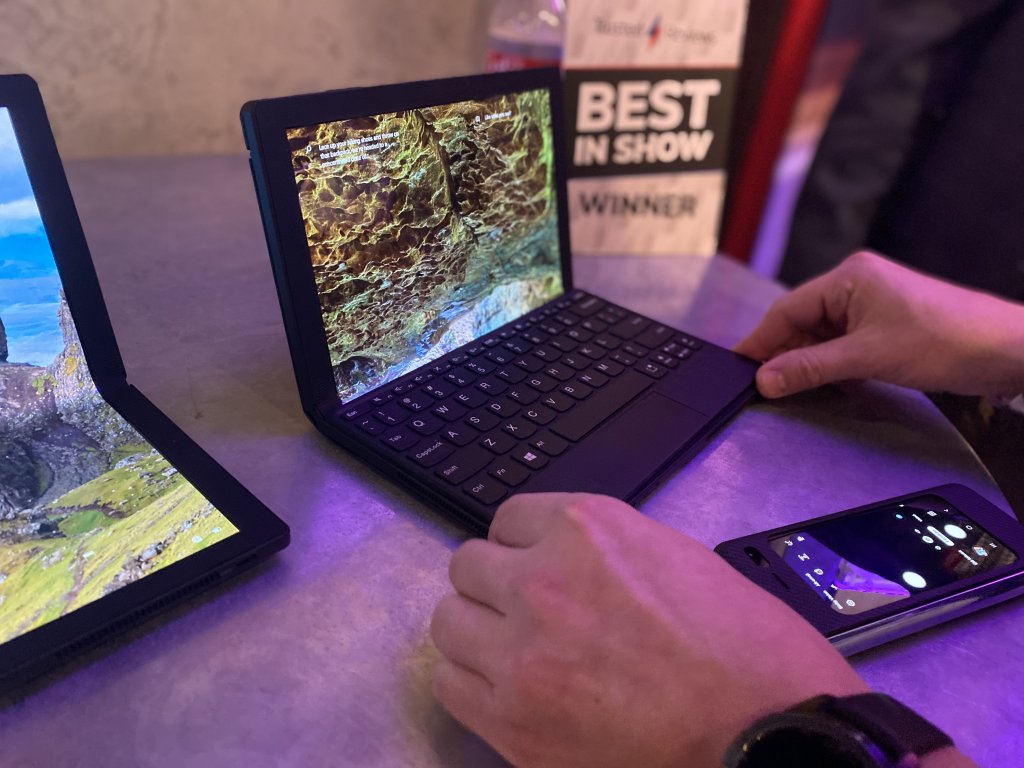
This is a hard argument to sell, and I know that, because I’m very cynical. To convince myself, and therefore our readers, that this wasn’t a gimmick, I played with the PC myself for a while at Lenovo’s suite. After toying with it for about 15 minutes on the press tour, the X1’s biggest, most obvious selling point became very clear to me: This PC is a game changer for the modern office.
After I arrived at that conclusion, I started thinking about how much it might improve my tech experience at work. I want one. I want one now. One of the other journalists on the tour actually abandoned the group to stay at the Fold the whole time. It was humorous, but honestly, I get it. It’s really cool. It’s at a relatively high price point for a laptop, though, at around $3,000 USD. And that price point seems much higher than it is, considering you can get a laptop with top-end graphical processing for the same price. But like solid state drives and wireless charging technology before it, folding screens will probably drop in price later down the road. For now, let’s focus on why the screen is useful. We’ll think about the high price later.
Imagine this scenario: Your desk has one cable, maybe another one for an extra monitor, and it plugs into your PC to charge it. Your PC looks like a big screen, similar to a traditional all-in-one desktop, and you have a wireless keyboard sitting in front of it on the desk for your usual work. When you have a meeting, you pick up the screen, place the magnetic keyboard on the lower half of the screen, and fold the screen itself over to look like a notebook computer.
You can use it like that on a plane, in a park, or on your commute, and then just unfold it and stand it up on your desk when you’re at work again. No laptop docks. No display cables. None of that. You can move around and leave your desk while staying tech-ready faster than you’re able to with a traditional laptop, all-in-one, desktop, tablet, or anything else.
Everything we know about the ThinkPad X1: Specs, problems, and use cases
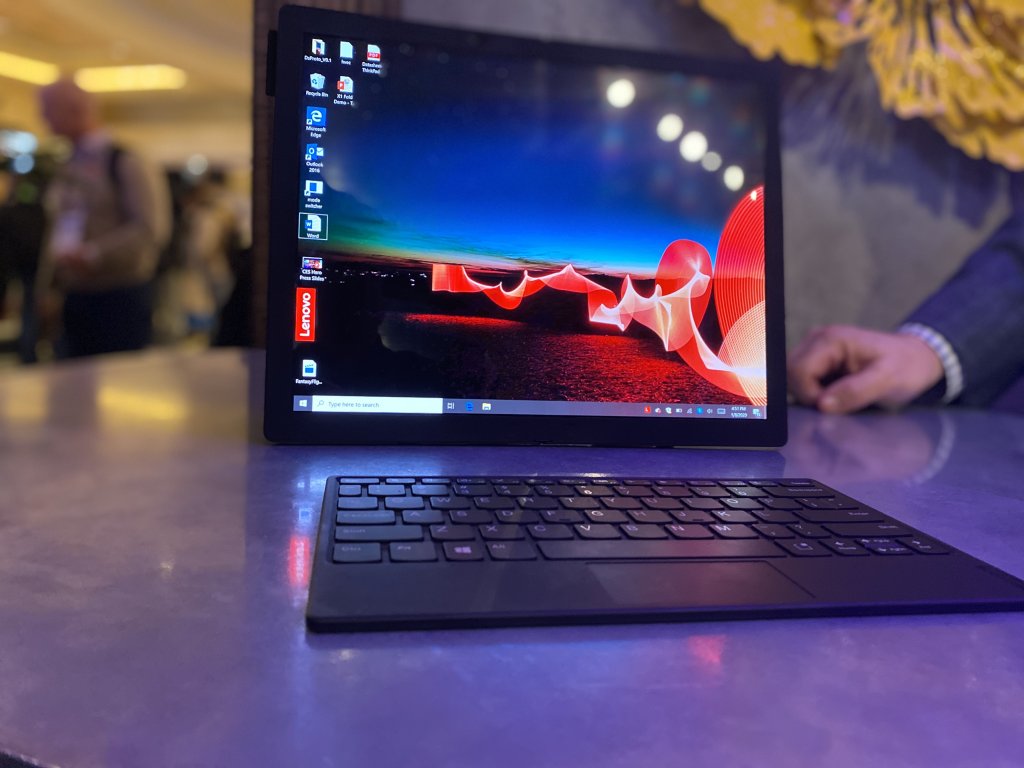
When thinking about the concept of a bent screen, many worries might creep into your mind, as they did mine. Does the folded screen leave a crease or mark when it’s straightened out? Is the screen big enough to actually fold and use as two functional screens? What are the specs, do they suck? To quickly answer all three: No, yes, I don’t know, and I don’t think so.
Over the course of the product tour, I and many other journalists picked up and bent the laptops for photos and testing. Every time it was straightened, there was no trace of the bend. It felt like one big flat screen. When bent, the two screens are certainly small, but they just feel like small notebook screens rather than being too small. The best part of the bent version, in my mind, is the fact that the keyboard magnetizes to one of the small screens on top of everything else. There’s a lot of practicality baked into that feature alone, despite how small it sounds.
As for specs, things get a little tricky. Lenovo didn’t include any of the X1’s specs during the tour, nor was I able to browse through the system to find them myself. So, I had to go by feel. It felt snappy, at least. There are a couple of cool specs that were revealed on Lenovo’s official announcement, at least. For starters, it’s an OLED screen. You’d assume as much, because a bending LCD wouldn’t last very long (it would bend exactly once), but still, that means deeper blacks and more vibrant color. It also only weighs 2.2 lbs. That’s all we know so far, but details should roll out over the next couple of months as the summer release date approaches.

